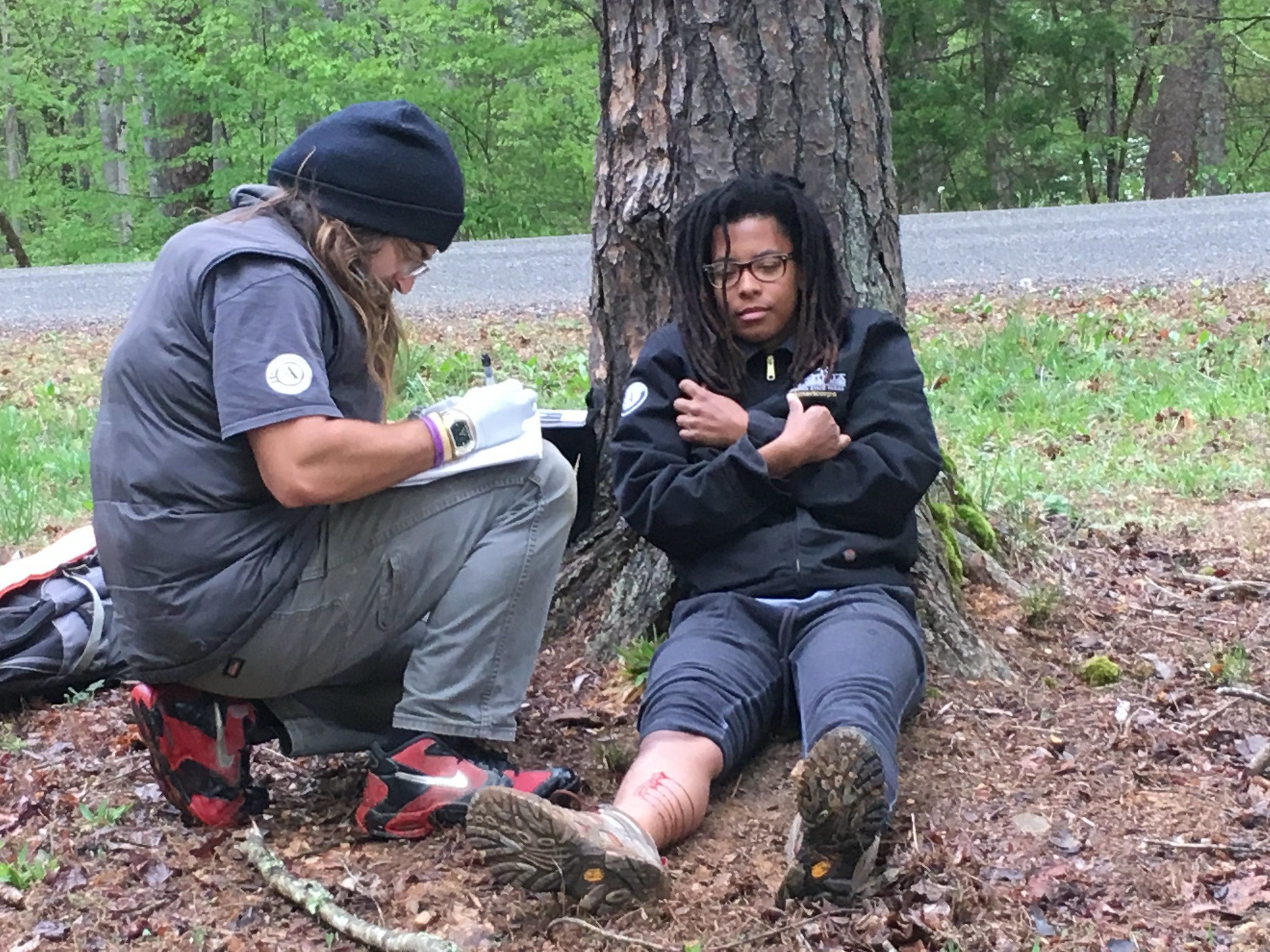Should You Buy Backpacking Insurance?

'Virginia State Parks'
Charles Merritt was hiking the Appalachian Trail when he got word that he’d been accepted into the graduate business program at VCU Brandcenter in Richmond, Virginia. With 700 miles under his belt, he left the trail, and had his brother pick him up on the side of the road. The trip had gone well, aside from a fall he took after an ice storm.
“I ended up going over the edge of the trail and got caught by a tree, so I only fell three or four feet,” he says. “Fortunately, the tree was there, and I didn’t go the rest of the way.”
With an injured knee and bruised ribs, he had hitchhiked to Helen, Georgia, where he patched himself up with supplies from a drugstore rather than going to an urgent care center. His objective was to avoid out-of-pocket expenses he’d incur through his COBRA health plan. “I got one night in a hotel, and waited it out,” he says.
Accidents can be costly.
The experience would prove valuable years later when Merritt combined his marketing acumen with the insurance background and tech skills of cofounders of Jay Paul and David Vogeleer to develop an on-demand accident insurance product called Buddy.
The founders—all three lovers of the outdoors—saw all too often what happened when friends and acquaintances incurred injuries trail running, backpacking, biking, climbing, and paddling. Even among those with health insurance, high deductibles and copays often compelled them to cut down on outdoor activities, sell their gear, and in some cases start crowdfunding pages to cover expenses. And they’re not alone: Since 2011, the average deductible for an individual health insurance plan has risen to more than $4,000, according to healthcare consulting firm Avalere.
Buddy isn’t the only accident insurance provider on the market (many workers can get coverage through their jobs), but according to Merritt, it differs from its competitors in three ways: coverage duration, policy start times, and benefits. Most accident insurance programs offer only annual plans; Buddy provides coverage by the day, week, month, and year. And coverage begins immediately.
“Most other providers, though they may collect your information online, generally they will farm that lead out to a third-party broker or agent who will call you back in a couple days,” he says. “If you want to be covered for a trip you were doing starting Friday after work, we can do that, but Aflac can’t.”
Buddy also has no reduction of benefits for risky activities unless they’re specifically excluded.
“Some plans might reduce your benefits if they found out you were racing downhill mountain bikes. But for us, we’ll just tell you up front. If it’s not excluded, then you’re covered. If you get injured, we’ll pay you the full benefit you’re entitled to.” (According to Merritt, hikers shouldn’t expect to encounter any exclusions.) For an individual backpacking plan, the cost ranges from about $10 to $50 a month, while family plans run from about $24 a day to $138 a month.
Because insurance is regulated at the state level, Buddy must be approved by each state. To date, it’s available in Colorado, Arizona, Texas, Ohio, Kentucky, and Tennessee.
Will hikers buy in?
Obtaining Buddy coverage involves answering a few online questions such as the activity you plan to pursue, the duration of coverage, specific dates, and who you want to cover (yourself, spouse, the whole family, or just the kids). If the policyholder gets hurt, they file a claim and receives a check depending on the type and severity of their injury.
The question, of course, is: Will hikers and backpackers see value in such a product? Some statistics suggest so. A 2017 survy of 141 hikers by The Trek that found almost half (47%) said they had dropped out of a long-distance hike without completing it. Of those hikers, 42% dropped out due to a major injury or illness, and 27% due to a minor injury or physical problem. (Fifteen percent dropped out due to mental fatigue or loss of interest, and another 15% due to money, time, or a family concern.)
Merritt suggests hikers consider accident insurance like other gear they always pack. “Whenever I go backpacking, there are things that are always in my pack,” he says “I always take a hardshell even if it’s a perfect spring or fall day just in case. I think about our product as an insurance equivalent of the hard shell—just in case.”